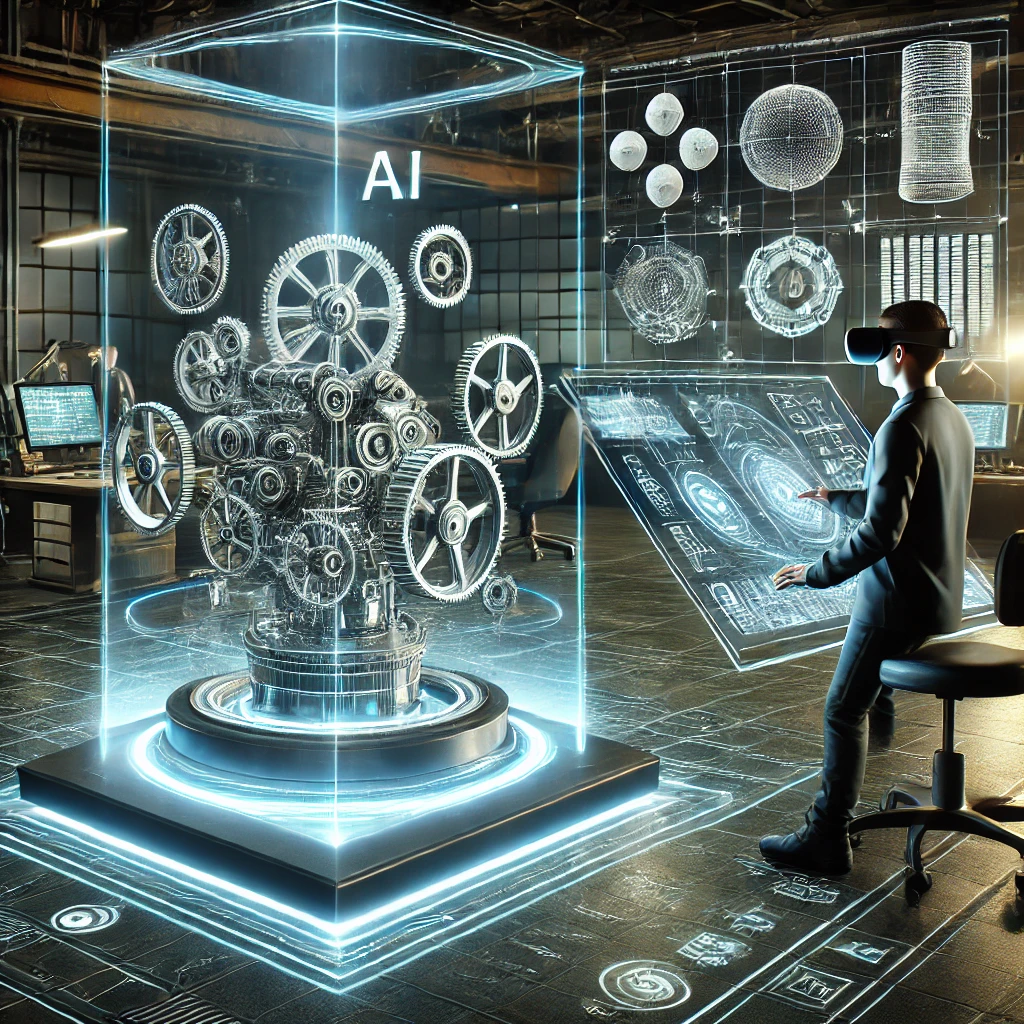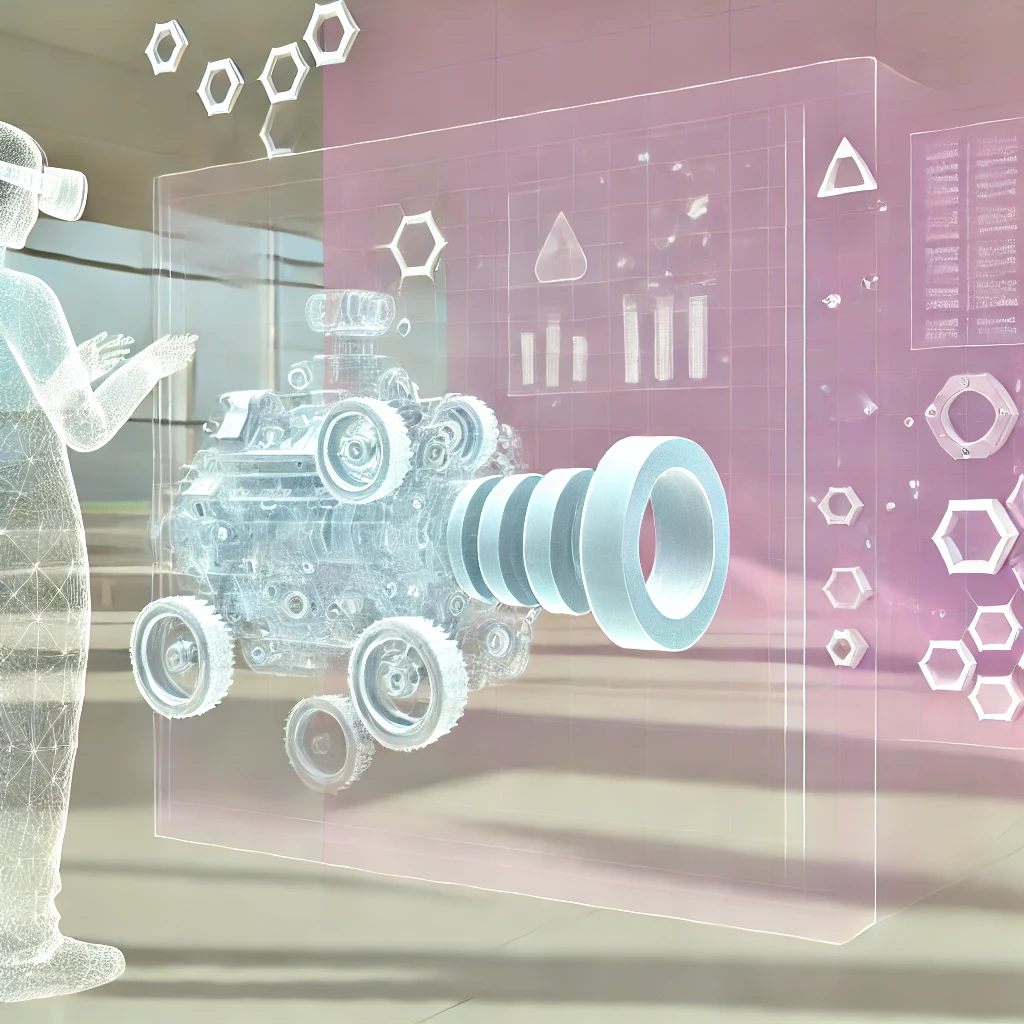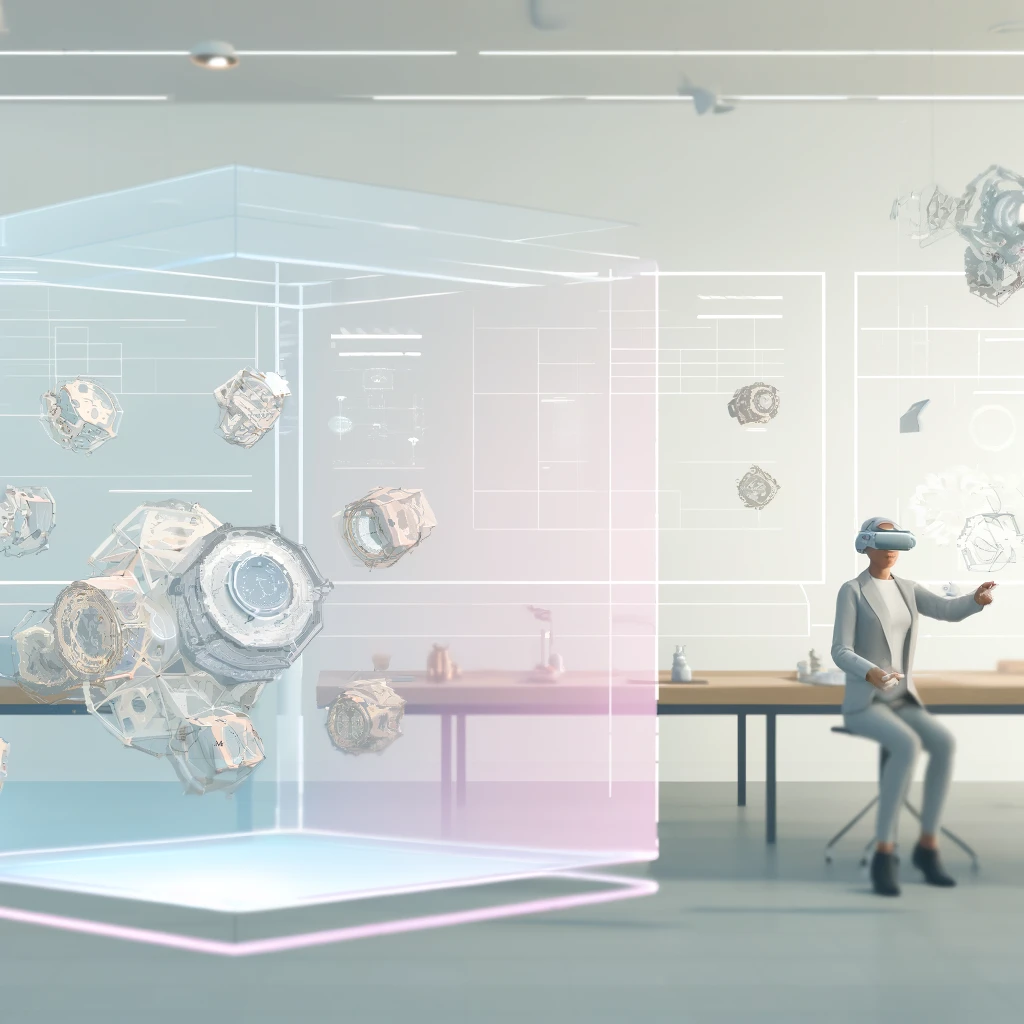
Exploring 21 AI Tools for Mechanical Design: Revolutionizing the Industry
In the realm of mechanical design, the integration of artificial intelligence (AI) has transformed traditional methodologies, ushering in a new era of efficiency and innovation. AI tools for mechanical design are pivotal in optimizing design processes, enhancing accuracy, and reducing time-to-market. These advanced tools leverage machine learning and AI technologies to automate complex tasks, providing mechanical designers with unprecedented capabilities. This article delves into some of the leading AI tools that are redefining the landscape of mechanical design, highlighting their unique features and the profound impact they have on the industry.
1.Autodesk Fusion 360: Integrating AI for Enhanced Product Development
Autodesk Fusion 360 stands out as a comprehensive cloud-based 3D CAD, CAM, and CAE tool that seamlessly incorporates AI to streamline product development. One of its standout features is generative design, where AI algorithms generate optimal designs based on specific constraints and requirements. This not only speeds up the design process but also ensures that the products are both innovative and functional. Fusion 360’s cloud-based nature allows for easy collaboration across various teams, making it a versatile tool for mechanical designers seeking to enhance productivity and innovation.
2.SolidWorks: Empowering Designers with AI-Driven Solutions
SolidWorks has been a stalwart in the CAD software arena but has recently expanded its capabilities by integrating AI features through tools like SolidWorks xDesign. This enhancement provides AI-driven design and simulation capabilities in the cloud, facilitating a more streamlined and efficient workflow. Mechanical designers can leverage these AI tools to automatically suggest design modifications, optimize performance, and even predict real-world behavior of prototypes. SolidWorks xDesign thus represents a significant leap forward, offering robust simulation tools that help designers reduce errors and refine their creations before going to production.
3.Ansys Discovery: Pioneering Real-Time Simulation with AI
Ansys Discovery is another powerful tool that integrates AI to revolutionize the design process. It offers real-time simulation paired with AI-based guidance, enabling engineers to produce more innovative and efficient designs rapidly. This tool is particularly useful in reducing the need for extensive simulations and expertise, as it allows for immediate feedback and iterative design adjustments. Ansys Discovery’s AI capabilities help predict mechanical behaviors and dynamics, making it an invaluable tool for those involved in the fast-paced field of mechanical engineering.
4. PTC Creo: Enhancing Design Innovation with Generative AI
PTC Creo incorporates AI through its generative design capabilities, which automate the creation of optimized designs within predefined system constraints. This not only accelerates the design process but also fosters innovation by allowing designers to explore a wider range of solutions quickly. PTC Creo’s AI tools are designed to enhance productivity and foster creativity, making it an essential tool for mechanical designers aiming to stay at the cutting edge of technology and design trends.
5.Altair Inspire: Optimizing Designs with Simulation-Driven AI
Altair Inspire utilizes simulation-driven design to quickly produce structurally efficient concepts, with AI algorithms suggesting design modifications to enhance performance and reduce material usage. This tool is particularly adept at identifying optimal load paths and material distribution, which are crucial for ensuring the structural integrity and performance of mechanical components. Altair Inspire’s AI-driven approach not only saves time but also material resources, making it a sustainable choice for modern mechanical design practices.

6.IBM Watson
IBM Watson is a powerhouse in the realm of AI, known for its cognitive capabilities that extend to various sectors, including mechanical engineering. In mechanical design, Watson can analyze large sets of data from sensors and maintenance logs to predict equipment failures and suggest design improvements. This predictive maintenance capability helps engineers optimize designs for longevity and performance, reducing downtime and maintenance costs. Additionally, Watson’s AI can be integrated into simulation tools, enhancing the accuracy and efficiency of stress tests and load analyses.
7.Keras
Keras is an open-source neural network library written in Python, designed to enable fast experimentation with deep neural networks. It is user-friendly, modular, and extendable, making it a popular choice among researchers and developers in mechanical design who are working with AI. Keras can be used to develop and train machine learning models that are capable of performing complex calculations and simulations for structural analysis, material optimization, and dynamic systems modeling in mechanical engineering.
8. Mintlify
Mintlify is not directly a mechanical design tool but is highly relevant for engineers looking to streamline their documentation processes. It uses AI to help developers and technical writers generate, maintain, and update documentation efficiently. For mechanical engineers, Mintlify can automate the creation of detailed documentation for design specifications, maintenance manuals, and user guides, ensuring that all technical materials are up-to-date and accurately reflect the current design and operational procedures.
9. Alli AI
Alli AI is designed to optimize SEO strategies, but its capabilities can be beneficial in the context of mechanical design by helping firms enhance the online visibility of their design portfolios and services. While not directly involved in the design process, Alli AI can analyze web content related to mechanical engineering services, suggest improvements, and help companies target the right audience with the right keywords. This can be particularly useful for freelance mechanical designers or firms looking to attract new clients through improved search engine rankings.
10.DeepBrain AI
DeepBrain AI integrates artificial intelligence to create realistic human avatars and virtual assistants. In mechanical engineering, such AI can be used to develop interactive tutorials and virtual assistance for complex machinery and systems. For instance, DeepBrain AI can power a virtual assistant that guides technicians through maintenance processes or help customers understand the functionalities of a mechanical product through interactive, AI-generated human-like interactions.
11.AutoDraw
AutoDraw is a web-based tool that uses machine learning to turn crude sketches into polished illustrations quickly. For mechanical designers, this can be particularly useful during the brainstorming or conceptual phase, where quick visualization is needed. AutoDraw’s AI recognizes doodles and suggests professionally drawn images to replace them, streamlining the process of creating presentation-ready concept sketches.
12. Caffe
Caffe is a deep learning framework known for its speed and modularity. Developed by the Berkeley Vision and Learning Center, it is particularly popular for applications that require real-time or near-real-time processing. In mechanical engineering, Caffe can be used to train and deploy models that perform tasks such as predictive maintenance, defect detection in manufacturing processes, or material characterization through image processing.
13. EvolveLAB
EvolveLAB is an innovative company that provides automation and optimization services in the architecture, engineering, and construction industries. They use AI to help professionals optimize designs for various parameters, including material use, energy efficiency, and spatial efficiency. For mechanical design, their tools can simulate and optimize HVAC systems, structural loads, and more, enhancing both the performance and sustainability of engineering projects.
14. Apache MXNet
Apache MXNet is an open-source deep learning framework designed for both efficiency and flexibility. It allows researchers to design, train, and deploy deep neural networks on a wide variety of devices, from cloud infrastructure to mobile devices. Mechanical engineers can use MXNet for tasks such as real-time simulation of complex systems, analysis of mechanical properties under various conditions, and optimization of production processes.
15. H2O
H2O is an open-source, fast, scalable machine learning and predictive analytics platform that allows users to build machine learning models on big data and provides easy productionalization of those models in an enterprise environment. In mechanical design, H2O can help in analyzing sensor data for predictive maintenance, optimizing supply chains, and modeling fluid dynamics and other complex phenomena.

Discover : Best Ai Tools for Outlook
16. Chatsonic
Chatsonic is a chatbot by Writesonic, designed to incorporate real-time data from Google into conversations. It can also generate human-like responses in various languages and handle multiple tasks simultaneously. While not directly used in mechanical design, it can assist in customer support, engaging with clients or users, and fetching real-time information relevant to mechanical engineering projects.
17. DALL-E
DALL-E is an AI program created by OpenAI, capable of generating images from textual descriptions. For mechanical designers, DALL-E can be used to visualize new components or products before they are physically modeled or manufactured. It can transform descriptions into detailed images, aiding in conceptual visualization and client presentations.
18. Looka Inc.
Looka combines AI with unique design preferences to create custom logos and branding materials. While its primary use is in graphic design, mechanical engineering firms can utilize Looka to quickly develop branding for new products or projects, ensuring consistent and appealing visual communication across technical documentation and marketing materials.
19. Scikit-learn
Scikit-learn is a popular library for machine learning in Python. It provides a wide array of supervised and unsupervised learning algorithms via a consistent interface. Mechanical engineers can use Scikit-learn for a variety of tasks such as algorithmic modeling of physical processes, data analysis from simulation results, and the creation of predictive models for failure analysis.
20. Khroma
Khroma is an AI tool that leverages algorithms to learn individual users’ color preferences and generate appealing color schemes. In mechanical design, Khroma can be used to customize product aesthetics more efficiently, ensuring that designs meet consumer preferences and brand guidelines. This tool can be especially useful in the preliminary stages of product development where visual appeal is critical, allowing designers to quickly explore various color combinations that resonate with target audiences.
21. Leo AI: The Revolutionary AI Design Assistant for Engineers
In the fast-evolving world of engineering, staying ahead requires not only skill but also the right tools. Enter Leo AI, an innovative AI design assistant specifically crafted to boost engineers’ efficiency and creativity. Whether tackling a new design from scratch or refining an existing product, Leo AI stands ready to transform your engineering workflow with speed, precision, and advanced AI capabilities.
Starting Designs and Modifying Existing Products with Ease
Leo AI simplifies the design process remarkably. Engineers can communicate directly with Leo, specifying their needs to receive design concepts within seconds. This instantaneous support not only speeds up the design phase but also enhances the creative process, allowing for rapid prototyping and iterative feedback. With Leo, starting a design or modifying an existing product becomes a seamlessly integrated experience.
Real-Time AI-Based Answers for Technical Queries
One of Leo AI’s standout features is its ability to provide real-time, AI-based answers to a wide array of technical questions. Engineers can inquire about material properties, coatings, thermal treatments, formulas, and codes. Leo responds with precise answers, drawing from an extensive database of over 1 million reliable engineering books, standards, and data sheets. Not only does it provide accurate information, but it also directs users to the specific page in the source material, significantly cutting down on research time.
Visual Concept Generation and Technical Sheet Creation
Describing your product to Leo results in more than just theoretical answers; it produces tangible visual concepts and detailed technical sheets. This feature is particularly useful for visualizing how different design elements come together, providing a comprehensive overview before any physical prototypes are developed. Engineers can assess various design aspects early in the development process, ensuring that the final product aligns perfectly with their specifications.
Upcoming Features: Custom Part Generation and Free Language Part Search
Looking ahead, Leo AI is set to offer even more groundbreaking features. Soon, engineers will be able to describe the functionality or geometry of a needed component and receive an editable CAD part complete with its feature tree. This advancement promises to further streamline the design process, making custom part creation more accessible and efficient.
Additionally, Leo will enhance part procurement by enabling engineers to find the best parts using natural language descriptions. Whether specifying components needed within a product lifecycle management (PLM) system or seeking parts from authorized vendors, Leo will locate and suggest the optimal solutions, saving time and reducing the likelihood of errors.
Conclusion
AI tools for mechanical design are not just enhancing the way designers work; they are completely redefining the possibilities within the field. From generative design to real-time simulation, the capabilities provided by these tools allow mechanical designers to achieve more precise, efficient, and innovative outcomes. As the industry continues to evolve, these tools will undoubtedly play a pivotal role in shaping the future of mechanical design.
FAQs
Which AI is best for mechanical engineering?
Autodesk Fusion 360 is widely regarded as one of the best AI tools for mechanical engineering. It offers a comprehensive suite of features, including AI-driven generative design, which optimizes designs based on specific constraints and requirements, making it highly suitable for complex mechanical engineering tasks.
Can AI do mechanical design?
Yes, AI can assist in mechanical design. AI tools like Autodesk Fusion 360, SolidWorks, and PTC Creo utilize generative design and real-time simulation features to help engineers create efficient and innovative designs. These tools can automate repetitive tasks, optimize design processes, and provide valuable insights, although they still require human oversight for critical decision-making.
What is the best AI for design?
For broad design applications, including mechanical, industrial, and product design, tools like Autodesk Fusion 360 and SolidWorks stand out. These platforms offer AI-driven functionalities that streamline the design process from concept to production, adapting to various design needs.
What is the best AI tool for engineering?
Ansys Discovery is highly recommended for engineering applications, especially due to its real-time simulation capabilities and AI-based guidance. This tool helps engineers quickly iterate and simulate designs, reducing the traditional barriers to advanced engineering analyses.
Is there an AI for engineering design?
Yes, there are several AI tools tailored for engineering design, such as Leo AI, which is designed to aid engineers by providing AI-based answers to technical questions and generating design concepts and technical sheets based on descriptions provided by the user.
Can AI replace engineers?
While AI can enhance the efficiency, accuracy, and creativity of engineering tasks, it is unlikely to replace engineers entirely. AI tools are best used as aids that enhance the skills of human engineers rather than replace them. Engineers bring critical thinking, creativity, and ethical considerations to projects, aspects that AI currently cannot fully replicate.
